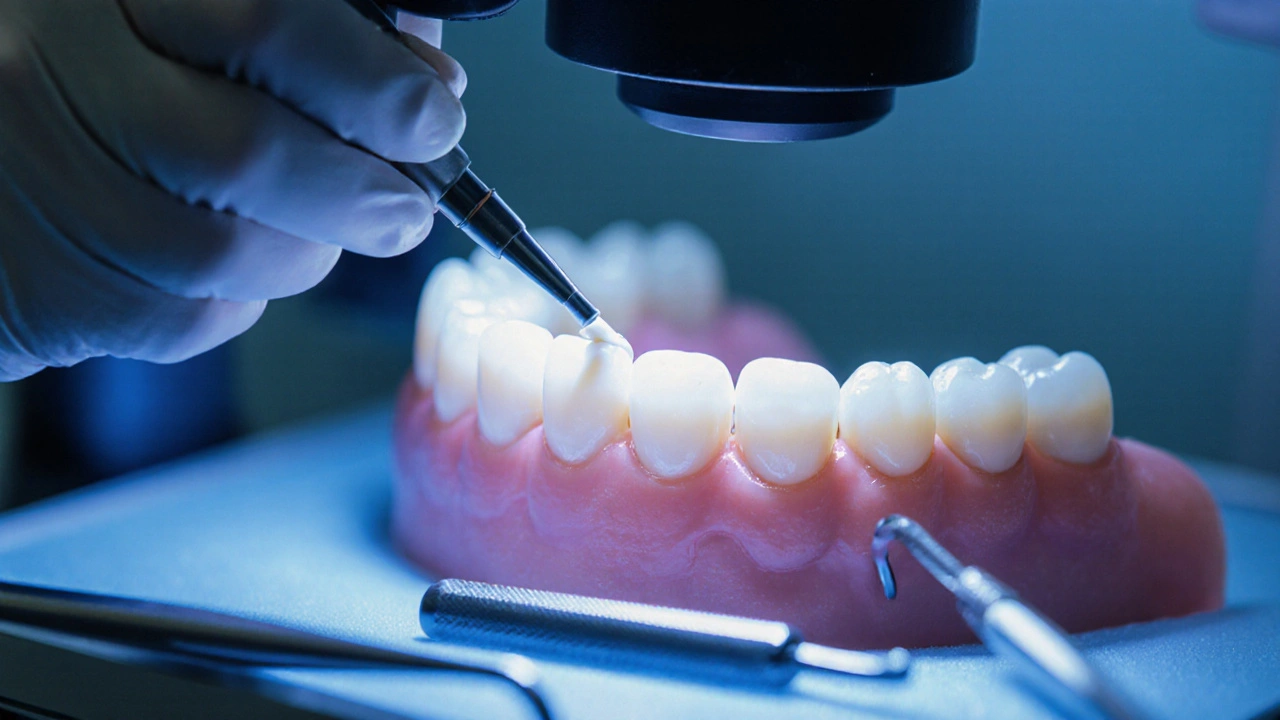Cementace zubních můstků: Co potřebujete vědět o trvanlivosti a péči
When you get a cementace zubních můstků, proces, který pevně upevňuje náhradní zuby na přirozené zuby nebo implantáty. Also known as fixace zubního můstku, it is the moment when your new smile becomes part of your mouth — not just a prosthetic, but a functional part of your bite. This isn’t just glue. It’s a precise, medically tested bonding that holds your entire dental bridge in place for years. If it fails, your bridge can loosen, trap food, cause gum inflammation, or even fall out — and that’s when things get expensive and uncomfortable.
What makes cementation work? It’s not just the cement. It’s the zubní můstek, náhradní zubní konstrukce, která nahrazuje jeden nebo více chybějících zubů a je upevněna na sousedních zubech — its fit, its shape, how well it matches your natural bite. A poorly made bridge won’t stay put, no matter how good the cement is. And the zubní cement, speciální materiál, který zajišťuje pevné spojení mezi můstkem a přirozenými zuby nebo implantáty matters too. There are glass ionomer cements, resin cements, zinc phosphate — each with different strengths. Your dentist picks the right one based on your case: is it a front tooth? A back molar? Are your natural teeth weak? Is there a risk of gum recession? Each choice changes how long your bridge lasts.
Many people think once the bridge is cemented, they’re done. But that’s where most problems start. The cement can wear down over time. Bacteria can sneak in under the edges. If you don’t clean around the bridge properly — especially under the pontic, the fake tooth in the middle — you’ll get plaque buildup, gum disease, and eventually bone loss. That’s why regular checkups aren’t optional. Every six months, your dentist checks the seal, looks for cracks, cleans under the bridge, and makes sure nothing’s shifting. A loose bridge isn’t always obvious. You might just notice your bite feels off, or food gets stuck more often.
And don’t underestimate the role of your daily habits. Brushing twice a day isn’t enough. You need floss threaders or interdental brushes to clean under the bridge. A water flosser helps. Avoid chewing ice, hard candy, or using your teeth to open packages. These aren’t just bad for natural teeth — they’re deadly for bridges. Even small cracks in the porcelain can let moisture in, weaken the cement, and cause failure. If your bridge was placed over implants, the cement needs to be extra secure — and you need to monitor the gums around the implants even closer.
Some bridges last 10 years. Others last 20. It’s not luck. It’s preparation, material choice, fit, and your daily care. If you’ve had a bridge cemented recently, pay attention. Is there any sensitivity? Any gum swelling? Any change in how your teeth come together? These aren’t normal. They’re warning signs. Don’t wait until it falls out. Go back. Get it checked.
Below you’ll find real stories and practical advice from patients who’ve been through this — how they kept their bridges in place, what mistakes they made, and what actually works to avoid costly repairs. You’ll learn how to spot early signs of trouble, which products help most, and why skipping cleanings can cost you your bridge faster than you think.

